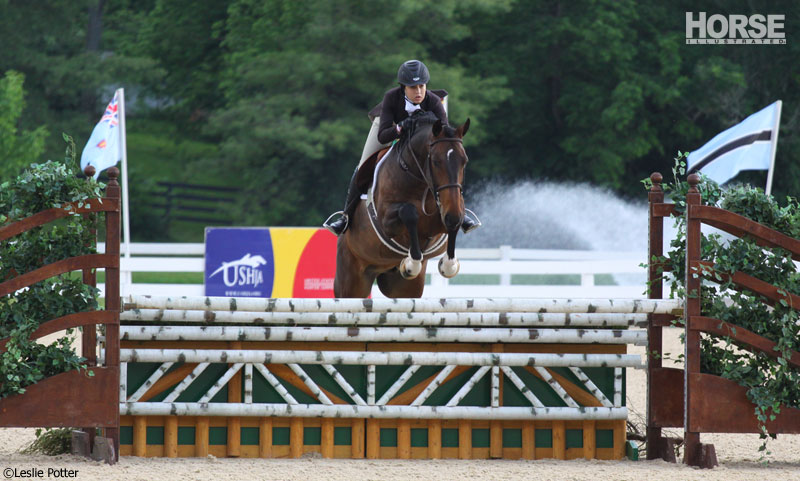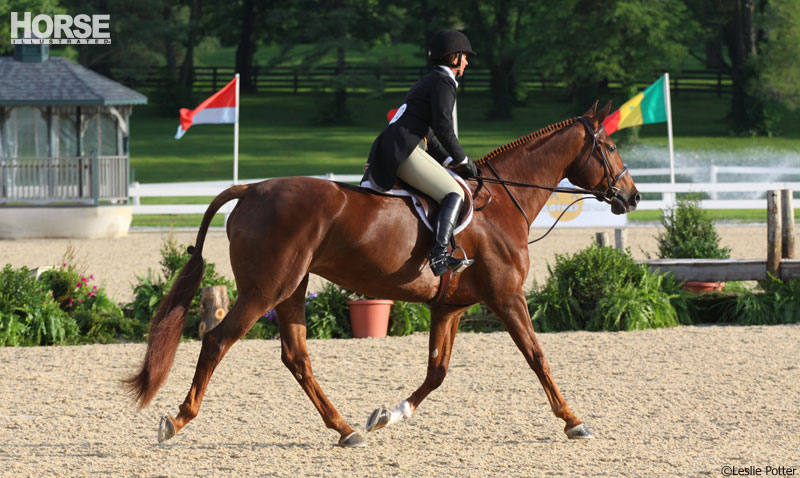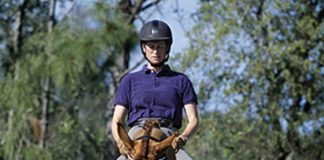In the last few years, hunter horses have been overshadowed by their flashier, speedier counterparts in the jumper ring. With an easily understood judging system—the horse and rider who jump fastest without knocking anything down or refusing win—show jumping is more welcoming to audiences of novices and non-riders than hunter competition is, with its subjective scoring based on form and way of going.

It came as a bit of a surprise, then, when the United States Hunter Jumper Association (USHJA) packed the house time after time at the international hunter derby demonstrations at the 2010 Alltech FEI World Equestrian Games in Lexington, Ky. These standing-room-only displays reinforced the idea that there was a segment of the equestrian population very keen on seeing show hunters back in the spotlight. The USHJA has fully embraced this interest and launched classes designed to specifically showcase the hunter horse: national and international hunter derbies.
Show Me the Money
Traditionally, the most lucrative classes to win at horse shows were in the jumper ring. Leading up to 2008, when the international derby was first introduced, an interest in encouraging up-and-coming riders to continue showing hunters was peaking, as many promising riders were leaving the hunter ranks to follow the money into the jumper ring.
The creation of hunter derby classes offering prize money has encouraged those with an interest in hunters to stay vested in hunter horses; they have also encouraged some traditionally jumper-only trainers to try their hand at creating derby horses.
All hunter derbies reward beautiful jumping style and a steady, flowing pace. National derby classes are offered at many shows and provide substantial prize money; United States Equestrian Federation (USEF)-recognized AA- and A-rated shows must offer a minimum of $2,500 in prize money. B-rated shows are required to offer $1,000, and C-rated shows must offer a minimum of $500. International hunter derbies, the most elite competition held only at AA-rated shows, are required to offer a minimum of $10,000 in prize money. With so much money at stake, it’s easy to see why everyone wants a piece of the derby pie!
“We have seen a consistent increase in derby participation each year,” says Whitney Allen, director of marketing and communications for the USHJA. The national hunter derby, which began in 2010, is one of the association’s most popular programs. In 2013, more than 2,200 horses participated in a national hunter derby class, and close to $2 million in prize money has been awarded to date.
How It Works
There are two different types of derbies: national and international. National hunter derbies are what the majority of riders compete in. This class can be held at any USEF-recognized show and has a fence height of 3 feet, with high-option fences set at 3’5″. It can have up to two judges. International hunter derbies will have fences from 3’6″ to 4 feet, with high-option fences that are at least 4’3″. An international class will have a panel of four judges.
All derbies have a two-round format. The first round is a classic round, where a horse is judged on performance, pace, jumping style, quality and movement. The second round is a handy hunter round, which encourages brilliance of pace (a more forward, galloping stride) and handiness, which means riders opt for tighter turns and different tracks to fences than those traditionally taken in a hunter round. Judges use a numerical scoring system to rate the horses after each round of competition.

One extra point is given for each high-option fence that is jumped. Interestingly, the point is awarded even if there is a refusal or rail down, provided that the horse and rider get over the fence. This point is added to the low score garnered by the rail or the refusal.
Types of Fences
“In the derbies, judges are looking for and rewarding handiness and boldness more than in a traditional hunter round,” says Allen. “They want to see a horse that really enjoys his job.” If you’ve never been to a hunter derby, it’s quite different from a traditional hunter round. Horses are encouraged to really open their stride and gallop to the fences, similar to what they would do in a hunt field.
“The derbies showcase what hunter horses are capable of in terms of athleticism and scope,” explains Allen. “These classes test both horses and riders with unique fences not seen in regular hunter classes that typically have traditional walls, verticals and oxers.”
Hunter derbies, no matter their height, are reminiscent of the hunt field and designed to bring show hunters back to their roots. Obstacles can include post-and-rail fences, stone walls, white-board fences or gates, coops, aikens (fences with both brush and timber), hedges, brush, logs or natural foliage. Banks and ditches can also make an appearance in the derby.
Saddle Up
For a fun and challenging new take on hunter competition, consider giving a national hunter derby a try.
Designed to encourage a rider to think on course and ride a forward horse, derbies are a wonderful change from traditional hunter rounds of outside line-diagonal, outside line-diagonal classes and counting strides. Who knows—you might even discover your horse was destined to be a derby horse!
More Hunter Derby Fun:
Make Your Own Derby Fences
This article originally appeared in the July 2014 issue of Horse Illustrated. Click here to subscribe.





